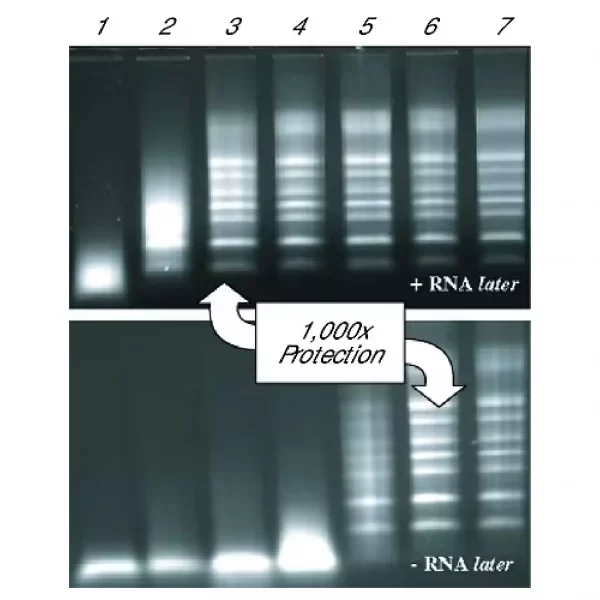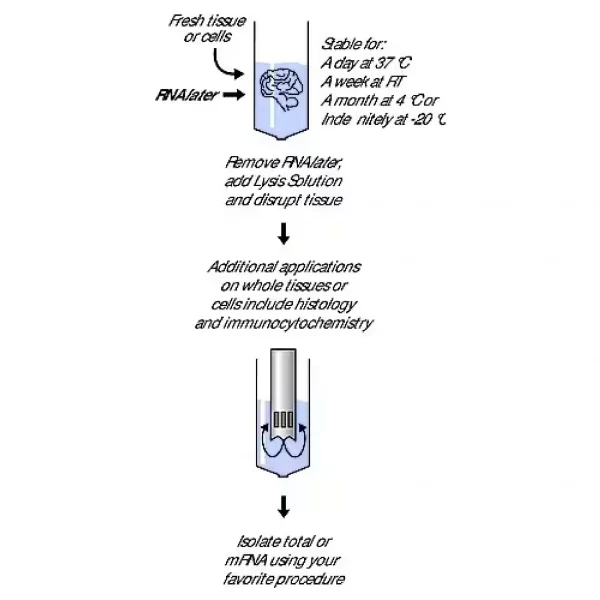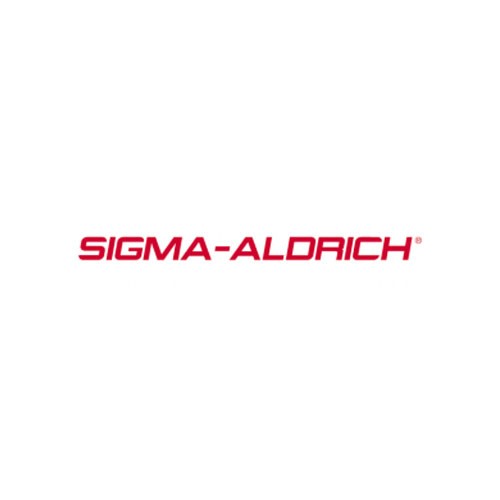
Polyethylene-graft-maleic Anhydride (Sigma-Aldrich) – Discontinued
Login to see pricesBrand:
Sigma-Aldrich
**This item has been discontinued. Please contact us for more information.
Application
Bond aid for polar to nonpolar substances. Compatibilizer for polymer blends.
Features and Benefits
Contributes abrasion resistance, lubricity, anti-blocking, and surface glass, allows chemical bonding via anhydride group.

Quercetin, ≥95% (Sigma-Aldrich)
Login to see pricesBrand:
Sigma-Aldrich
Description
CAS number: 117-39-5
Chemical Formula: C15H10O7
Molar Mass: 302.24g/mol
Synonyms: 2-(3,4-Dihydroxyphenyl)-3,5,7-trihydroxy-4H-1-benzopyran-4-one, 3,3′,4′,5,6-Pentahydroxyflavone
Application
• Quercetin has been used as an antioxidant which reversed the immunosuppressive effects of high glucose and hyperglycemic sera in type 2 diabetic patients.
• It has been used as a detoxifying phytochemical in Apis mellifera.
• It has been used as a positive control in DPPH (2,2- diphenyl-1-picryhydrazyl) radical scavenging assay. It has also been used for the preparation of calibration curve to determine total flavonoid content.
RNAlater® (Sigma)
Login to see pricesBrand:
Sigma
Description
Synonyms: RNA preservation solution, RNA protection solution, RNA protector, RNA stabilizer, RNA storage solution, RNA transportation solution
RNAlater® is an RNA stabilization solution that is designed to quickly permeate and stabilize RNA in tissues and cells after collection. It allows for long-term storage of samples at different temperatures, including room temperature, without compromising RNA integrity. It preserves RNA in tissues for up to 1 day at 37 °C, 1 week at 25 °C, and 1 month at 4 °C. Tissues can also be stored at -20 °C long-term.

RNaseZAP™ (Sigma-Aldrich)
Login to see pricesBrand:
Sigma-Aldrich
Description
Cleaning agent for removing RNase
Application
RNA purification: suitable
RNaseZAP™ has been used as a cleaning agent for removing RNase from glassware, apparatus, countertops and pipettors.
A cleaning agent for removing RNase from glassware, plastic surfaces, countertops, and pipettors. It is also effective at eliminating RNase contamination from microcentrifuge tubes without inhibiting subsequent enzymatic reactions.

RPMI-1640 Medium with 20 mM HEPES and L-glutamine, Sigma – Aldrich
Login to see pricesBrand:
Sigma
Description
Form: Liquid
Synonyms: Roswell Park Memorial Institute 1640 medium
Techniques: Cell culture | mammalian: suitable
Impurities: Endotoxin Tested
pH: >7.2
Components:
HEPES: 20 mM
NaHCO3: no
sodium pyruvate: no
phenol red: yes
L-glutamine: yes
RPMI 1640 Medium is a modification of McCoy’s 5A Medium designed to support lymphoblastoid cells in suspension culture. Although it was originally formulated to be used with a serum supplement, it has since been demonstrated to be capable of supporting a wide range of anchorage-dependent cells. RPMI 1640 Medium has also been extensively used in hybrid cell growth and fusion protocols. It has been shown to be suitable for the culturing of human normal and neoplastic leukocytes. This medium is based on the RPMI-1630 series of media and uses a bicarbonate buffering system with adjustments to amino acid and vitamin levels. It is also used for the growth of various cell cultures, such as fresh human lymphocytes in the 72-hour phytohemagglutinin (PHA) stimulation assay.
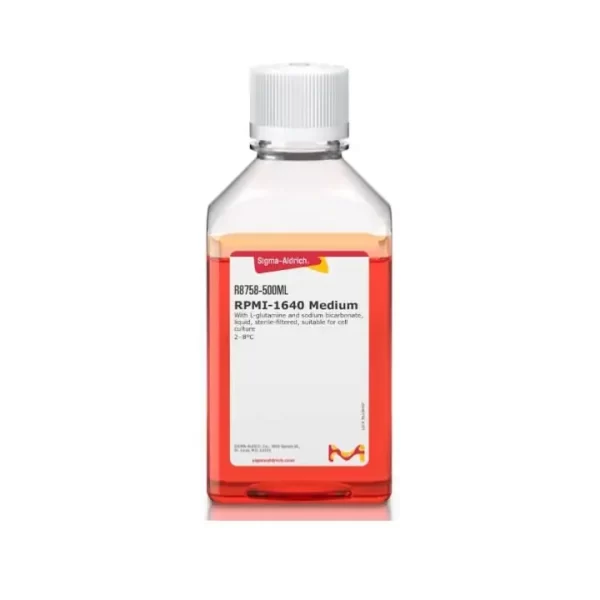
RPMI-1640 Medium-Sigma Aldrich
Login to see pricesBrand:
Sigma
Description
pH : > 7.2
Components :
HEPES: 20 mM
NaHCO3: no
sodium pyruvate: no
phenol red: yes
L-glutamine: yes
RPMI 1640 Medium was developed at Roswell Park Memorial Institute in 1966 by Moore and his co-workers. A modification of McCoy′s 5A Medium, it was formulated to support lymphoblastoid cells in suspension culture, but it has since been shown to support a wide variety of cells that are anchorage-dependent. Originally intended to be used with a serum supplement, RPMI 1640 has been shown to support several cell lines in the absence of serum. It has also been widely used in fusion protocols and in the growth of hybrid cells. This medium is suitable for culturing human normal and neoplastic leukocytes.
RPMI-1640 medium formulation is based on the RPMI-1630 series of media utilizing a bicarbonate buffering system and alterations in the amounts of amino acids and vitamins. It is used for the culture of human normal and neoplastic leukocytes. RPMI-1640 also supports the growth of various types of cell cultures, like fresh human lymphocytes in the 72-hour phytohemagglutinin (PHA) stimulation assay.
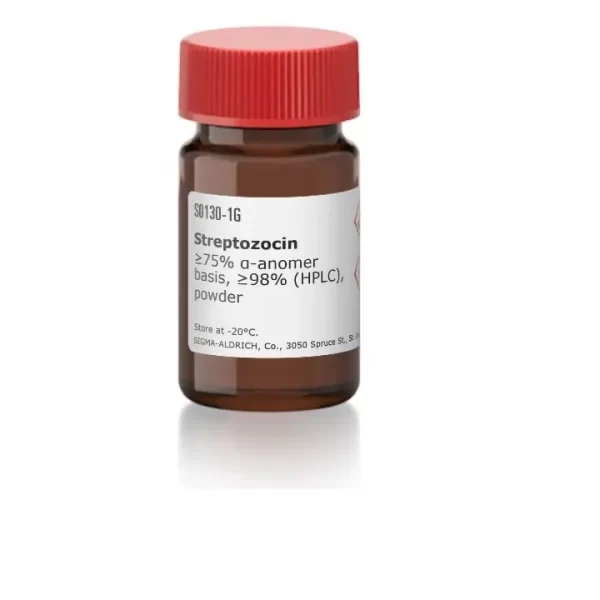
Streptozocin ≥75% α-anomer basis, ≥98% (HPLC) (Sigma-Aldrich)
Login to see pricesBrand:
Sigma
Description:
CAS Number : 18883-66-4
Molecular weight : 265.22 g/mol
Empirical formula : C8H15N3O7
Synonyms : N-(Methylnitrosocarbamoyl)-α-D-glucosamine, Streptozotocin
Streptozocin or streptozotocin, is obtained from Streptomyces achromogenes.[1] Streptozotocin, a glucosamine-nitrosourea, is a DNA alkylating agent that enters cells exclusively via the GLUT2 glucose transport protein. Streptozocin, a diabetagen, is especially toxic to pancreatic islet insulin-producing β-cells. It is toxic to GLUT2 positive neuroendocrine tumor cells.

SYBR® Green II RNA gel stain, 10,000 × in DMSO (Sigma-Aldrich)
Login to see pricesBrand:
Sigma
Description
CAS Number : 172827-25-7
Concentration : 10,000 × in DMSO
Usage : mL sufficient for 100 mini-gels
Synonyms : RNA gel dye, SYBR® RNA dye, safer gel stain
SYBR® Green II is a highly sensitive stain for post electrophoresis staining of RNA and ssDNA in agarose or polyacrylamide gels. SYBR® Green II is not selective for RNA staining but does exhibit a higher quantum yield when bound to RNA than to double stranded DNA.
Application :
-for the quantification of ribonucleic acid (RNA) in Escherichia coli[1]
-for staining 5′-ETS rRNA species separated on polyacrylamide gel prior to Northern blot analysis[2]
-to stain formaldehyde agarose gels to visualize RNA bands[3]
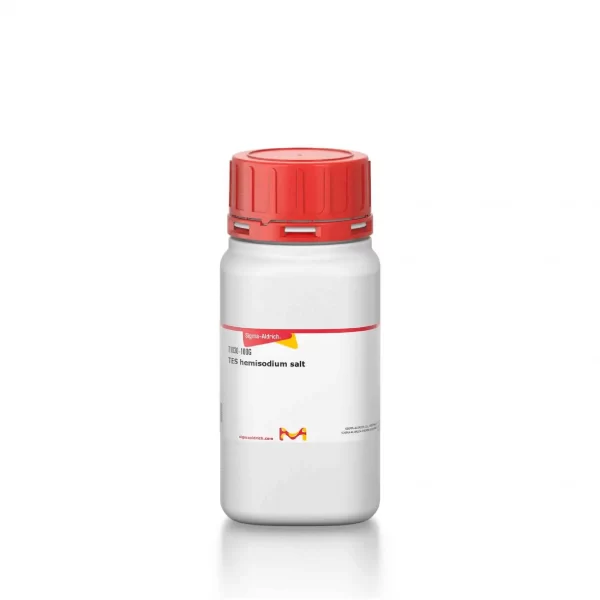
TES Hemisodium Salt, ≥99%
Login to see pricesBrand:
Sigma-Aldrich
Description
Empirical Formula: C6H14.5NO6S · 0.5 Na
Molecular Weight: 240.24
Synonyms: 2-[(2-Hydroxy-1,1-bis[hydroxymethyl]ethyl)amino]ethanesulfonic acid, N-tris(Hydroxymethyl)methyl-2-aminoethanesulfonic acid
Assay: ≥99%
Useful pH range: 6.8 – 8.2
Application: Diagnostic assay manufacturing
Solubility: Water: 0.25 g/mL, clear, colorless
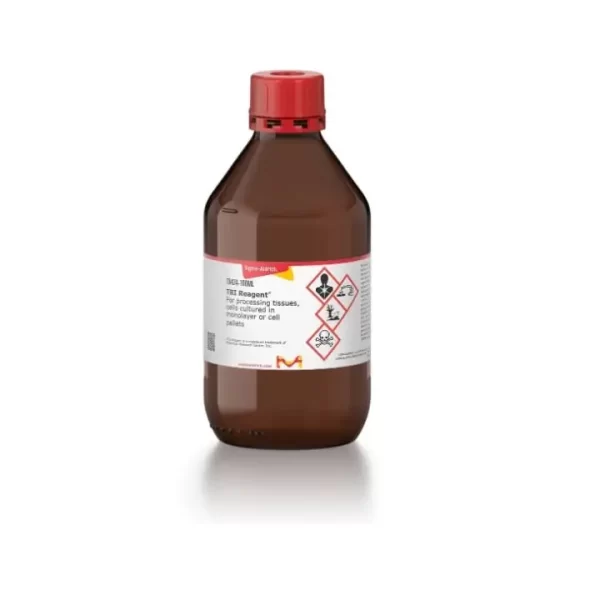
TRI Reagent® for processing tissues, cells cultured in monolayer or cell pellets (Sigma-Aldrich)
Login to see pricesBrand:
Sigma
Description:
Synonyms : DNA/RNA/protein extraction reagent, DNA/RNA/protein isolation reagent, DNA/RNA/protein purification reagent, TRI Reagent® cell pellet solution, cell pellet RNA extraction, cell pellet RNA isolation, cell pellet RNA purification, single step RNA extraction reagent, single step RNA isolation reagent, single step RNA purification reagent, total RNA extraction solution, total RNA isolation solution, total RNA purification solution, TRI Reagent® RNA Isolation Reagent.
TRI reagent® is a quick and convenient ready-to-use reagent useful for efficient total RNA extraction or for the simultaneous isolation of RNA, DNA and protein. TRI reagent® is a mixture of guanidine thiocyanate and phenol in a monophasic solution.
Homogenization or lysis of the tissue sample in TRI reagent® dissolves RNA, DNA and protein. The addition of chloroform or 1-bromo-3-chloropropane followed by centrifugation results in the separation of the mixture into three phases: an aqueous phase containing the RNA, the interphase containing DNA, and an organic phase containing proteins. Each of the components can then be isolated after separating the phases.

Triethylene glycol, ReagentPlus®, 99% (Sigma-Aldrich)
Login to see pricesBrand:
Sigma-Aldrich
Description
CAS number: 112-27-6
Chemical Formula: HO(CH2CH2O)2CH2CH2OH
Molar Mass: 150.17g/mol
Synonyms: Triglycol
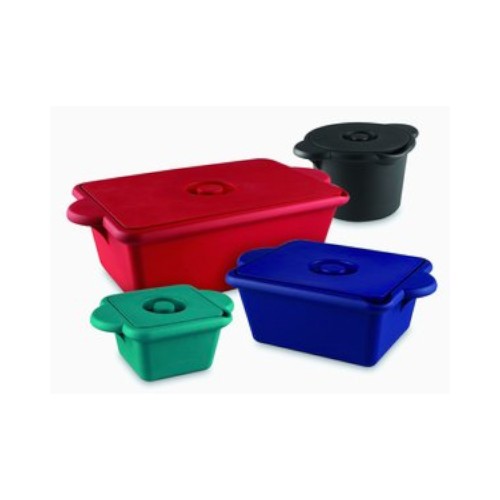
TrueNorth® Cool Container with Lid (Sigma-Aldrich)
Login to see pricesBrand:
Sigma-Aldrich
General description
These durable TrueNorth® Cool Container with Lid are for chilling temperature-sensitive samples. They have heavy insulation properties for the ultracold and are ideal for ice as well as ice-salt slurries.
Features and Benefits
• made from single-moulded polyurethane
• close-fit lid keeps evaporation to a minimum and features a comfortable recessed knob
• lid nests under the bucket to save space
• for low-temperature use to -196ºC at 1 bar
• stackable
• pour spout and large handles
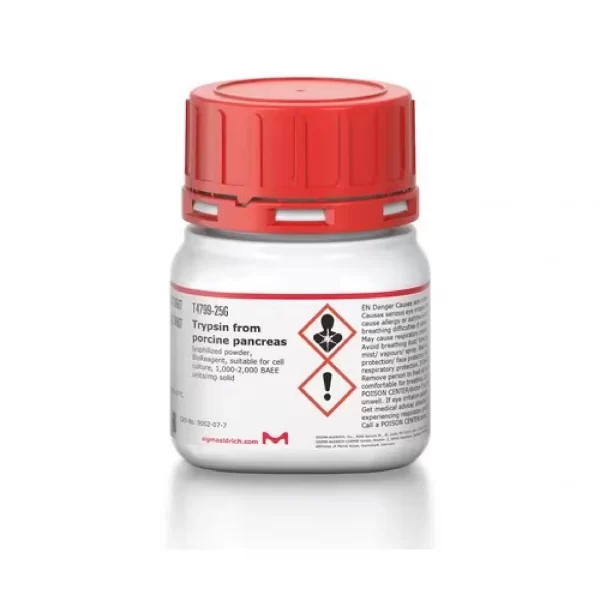
Trypsin from Porcine Pancreas (Sigma)
Login to see pricesBrand:
Sigma
Description
Product line: BioReagent
Biological source: Porcine pancreas
Specific activity: 1,000-2,000 BAEE units/mg solid
Trypsin is applicable for tissue disaggregation, due to its effective action and tolerance towards different cell types and serum-induced neutralization.[1]

TWEEN® 20 (Sigma-Aldrich)
Login to see pricesBrand:
Sigma-Aldrich
Description
CAS number: 9005-64-5
Suitability: Suitable for DNA extraction, RNA extraction, cell culture and protein purification
Synonym: Polyethylene glycol sorbitan monolaurate, Polyoxyethylenesorbitan monolaurate
General description
Tween®20 is a polyoxyethylene sorbitol ester that belongs to the polysorbate family. It is a nonionic detergent having a molecular weight of 1,225 daltons, assuming 20 ethylene oxide units, 1 sorbitol, and 1 lauric acid as the primary fatty acid. The ethylene oxide subunits are responsible for the hydrophilic nature of the surfactant, while the hydrocarbon chains provide the hydrophobic environment. Sorbitol forms the backbone ring to which the ethylene oxide polymers are attached.
Application
TWEEN 20 has been used as a component of:
• washing buffer and blocking buffer in Western blotting
• blocking buffer in immunohistochemistry
• washing buffer in ELISA (enzyme-linked immunosorbent assay)
• reaction mixture in PCR (polymerase chain reaction)
• emulsifying agent for the preparation of stable oil-in-water emulsions.
• pre-extraction of membranes to remove peripheral proteins (used at 2% for extraction of membrane-bound proteins)
• blocking agent for membrane-based immunoassays at a typical concentration of 0.05%
• lysing mammalian cells at a concentration of 0.005 to 0.5%

TWEEN® 20 BioXtra (Sigma-Aldrich)
Login to see pricesBrand:
Sigma-Aldrich
Description
CAS number: 9005-64-5
Suitability: Suitable for blocking, cell culture, hybridization, protein purification, transformation
Synonym: Polyethylene glycol sorbitan monolaurate, Polyoxyethylenesorbitan monolaurate
General description
Tween®20 is a polyoxyethylene sorbitol ester that belongs to the polysorbate family. It is a nonionic detergent having a molecular weight of 1,225 daltons, assuming 20 ethylene oxide units, 1 sorbitol, and 1 lauric acid as the primary fatty acid. The ethylene oxide subunits are responsible for the hydrophilic nature of the surfactant, while the hydrocarbon chains provide the hydrophobic environment. Sorbitol forms the backbone ring to which the ethylene oxide polymers are attached.
Application
TWEEN 20 is a non-ionic detergent that has been used in a variety of applications, including:
- Post-hybridization wash buffer after in situ hybridization.
- Used along with PBS (phosphate-buffered saline) as the washing buffer for ELISA and immunostaining.
- Acted as an emulsifying agent for the preparation of stable oil-in-water emulsions
- Used in pre-extraction of membranes to remove peripheral proteins (used at 2% for extraction of membrane-bound proteins).
- Acted as a blocking agent for membrane-based immunoassays at a typical concentration of 0.05%.
- Used for lysing mammalian cells at a concentration of 0.005 to 0.5%.

TWEEN® 20 for Molecular Biology (Sigma-Aldrich)
Login to see pricesBrand:
Sigma-Aldrich
Description
CAS number: 9005-64-5
Suitability: Suitable for molecular biology
Synonym: Polyethylene glycol sorbitan monolaurate, Polyoxyethylenesorbitan monolaurate
General description
Tween®20 is a polyoxyethylene sorbitol ester that belongs to the polysorbate family. It is a nonionic detergent having a molecular weight of 1,225 daltons, assuming 20 ethylene oxide units, 1 sorbitol, and 1 lauric acid as the primary fatty acid. The ethylene oxide subunits are responsible for the hydrophilic nature of the surfactant, while the hydrocarbon chains provide the hydrophobic environment. Sorbitol forms the backbone ring to which the ethylene oxide polymers are attached.
Application
TWEEN 20 is a non-ionic detergent that widely used in biochemical applications. It has been used:
• As an emulsifying agent for the preparation of stable oil-in-water emulsions
• In pre-extraction of membranes to remove peripheral proteins (used at 2% for extraction of membrane-bound proteins)
• As a blocking agent for membrane-based immunoassays at a typical concentration of 0.05%
• For lysing mammalian cells at a concentration of 0.005 to 0.5%
• Along with PBS in the dilution of antibodies in immunohistochemistry technique
• For washing cells in FISH (Fluorescence in situ hybridization) technique

